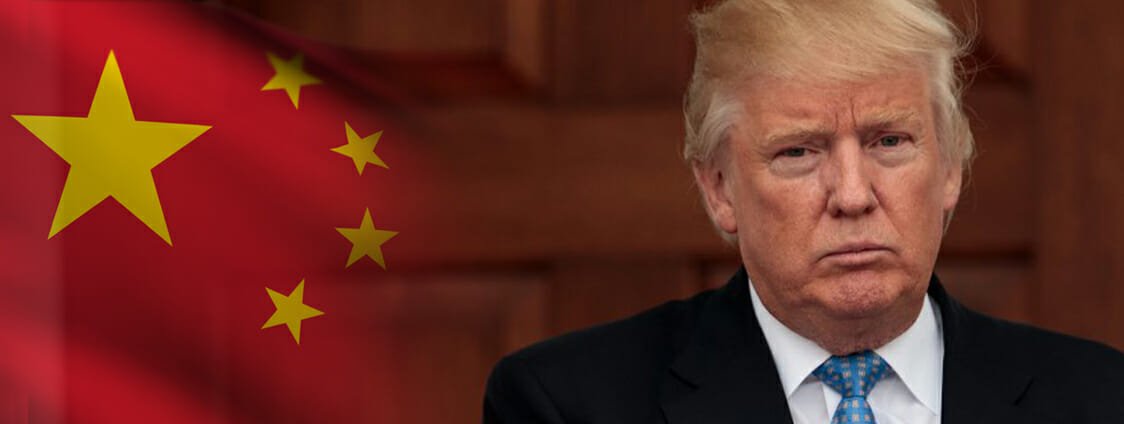Americans and the global community alike are paying close attention to the news coming out of Washington DC as a very populist Trump administration kicks into high gear. Sweeping changes are already taking place across domestic and international policies. Although it’s still too early to understand what the Trump presidency will fully entail, the new administration has made strong statements about some of the changes it intends to make – many of which will have a significant impact on global manufacturing and supply chains. What does all of this mean for businesses that either use a China outsource manufacturing strategy or plan on establishing one? To find out, let’s take a glimpse into how the ‘Trump Effect’ is re-shaping US-China trade policy, tax codes, and international relations.
1) Trade Policy
Since the inauguration of President Donald Trump, there’s been a lot of buzz in the news regarding withdrawal from the Trans-Pacific Partnership (TPP). Larger than NAFTA, the TPP is a free trade agreement among the United States and 11 other Pacific Rim nations including Vietnam, Malaysia, and Singapore in the South China sea. The agreement did not include China. A major reason for this was to balance the dominance of international trade coming from China.
“Withdraw from the Trans Pacific Partnership”
It was also seen by many as a move by former President Obama to counter the influence of China. After taking office, President Trump wasted no time removing the U.S. from the TPP deal. The president stated that the deal was a “potential disaster for our country”. By eliminating U.S. participation in the TPP, Trump has promised to pursue individual trade deals with Pacific Rim nations. This type of bi-lateral approach will also have its own set of opportunities and challenges, but it’s still too early to make predications as to what will happen next.
A move towards this type of protectionist trade policy could bring headaches for companies that manufacture and assemble in China. Under such conditions, the cost of sourcing from China will likely rise, while finished goods and components are at risk of being stranded overseas. Simultaneously, it’s possible for export sales to China to slow or even stop as new barriers to free trade emerge and trade negotiators readjust their positions. Although Trump’s goal is to boost America’s economic independence and create more jobs on the domestic front, U.S. manufacturing plants are likely to utilize an automated production strategy as robotics become increasingly common.
Ultimately, global supply chain systems will be forced to adapt quickly for survival in an environment that is becoming increasingly protectionist in nature. Businesses with the ability to act quickly and forge new trading relationships that drive economic benefits to the U.S. may be able to strengthen their position in the marketplace. Businesses engaged in global sourcing will need to re-assess their supply chain network structure and pay closer attention to geo-political risk factors.
“Levy 45% Tariffs on goods imported from China”
Another aspect of trade policy that has been a huge talking point of President Trump, is to levy 45% tariffs on goods imported from China. This is another form of trade protectionism in part of the same effort to protect American workers and return manufacturing jobs to the U.S., but there’s a slew of potential consequences of imposing high tariffs on the largest trading partner of the United States. The American Chamber of Commerce in China stated that Beijing has prepared to retaliate in the event Trump moves forward with measures to restrict Chinese imports.
If not settled through negotiation, it has the potential to spark a trade war with China that could have dire consequences to U.S. manufactures. A tariff on Chinese goods may also lead to higher prices and lower margins for U.S. firms. This is especially true for American companies that source component parts for tech manufacturing. Many trade experts dismiss Trump’s tough talk as bluster that will give way to more pragmatic concerns. Until then, the world is closely waiting to see if the President’s actions will match his words.
2) Tax Policy
Another defining element of President Trump’s agenda is changing America’s corporate tax rate. With the third highest corporate tax rate in the world, the President has proposed a major tax cut for U.S. businesses that would bring the current rate of 35% down to 15%. If this new tax policy becomes a reality, it may lead to on-shoring of U.S. manufacturing and supply chain operations that have been outsourced to other parts of the world for decades, in particular, China.
“Lower the business tax rate from 35% to 15%”
There is a lot of uncertainty and risk mitigation taking place as companies wait to see a final outcome. In the meantime, businesses are beginning to take more consideration towards the prospect of re-shoring their manufacturing and supply chain operations.
Efforts by companies to circumvent America’s high corporate tax rate over the years has led to a separation of intellectual property from physical products and have left sales hanging overseas. The proposed change in the U.S. corporate tax rate could create an environment where businesses select manufacturing location based on the best fit for customer markets and key stakeholders, rather than tax optimization. This could benefit supply chains causing a simplification of network design in the areas of sourcing, planning, and product development.
3) US-China Relations Under President Trump
Depending on the news media outlet, talks of the future US-China relationship range from doomsday predictions to milder hums of a functional, yet tension filled relationship between the two nations. There is no doubt, the world’s most important bilateral relationship is poised to receive a major stress test.
A more aggressive stance with China on trade and issues like the South China sea risk the stability of an already strained relationship with an authoritarian government and culture that also has its own brand of nationalism. Military intervention aside, China has limited opportunities for retaliation, but could act by buying less American branded goods which could be a serious upset to American industry.
In the event that US-China relations take a sour turn, China’s biggest source of recourse would be to disrupt US-China supply chains by halting exports of crucial materials or components. On the flip side, this could also damage China’s reputation of being a reliable supplier. One thing is for sure, the two nations are undeniably intertwined through trade and commerce. It’s to the advantage of both to strike a balance through negotiation that can advance the economies of each country.
While the Trump effect is bound to be a disruptive force for China sourcing and supply chains, it could also bring opportunities for businesses that are well informed and able to mitigate geo-political risk factors. Fortune favors the bold and it has never been more true for businesses with the ability to exercise flexibility in their supplier relationships and agility to re-organize and build amongst offsets.
While free trade deals are unlikely to survive and future tariff and tax policies remain ambiguous, there could be opportunities to harness this new environment in a variety of ways that is mutually beneficial to U.S. businesses and Chinese manufacturers.
Michelle Scheblein is head of content development at BaySource Global. She has a B.A. in international business from the University of South Florida and has studied, worked, and traveled throughout China. She can be reached at mscheblein@gmail.com







Follow Us